The facts are in. “There is an epidemic of stress-related anxiety and depression in young people,” says clinical neuropsychologist William Stixrud, Ph.D., an adolescent-brain specialist on the faculty at Children’s National and George Washington School of Medicine.
In The Self-Driven Child: The Science and Sense of Giving Your Kids More Control Over Their Lives, Stixrud and test-prep authority Ned Johnson give parents tools to help their children handle and recover from stress while being happier and more motivated. Here, in the first of a two-part article and video interview for Enjoy TM News, they share brain-based advice for real-world parenting. Order a copy of the bestselling book The Self-Driven Child ►
Why Autonomy Is Key for Kids
“It turns out that the most stressful thing in the universe [for a child] is having a low sense of control,” Stixrud says. At the same time, the latest brain research shows “it is autonomy or a sense of control that makes kids turn into self-motivated adolescents and adults.”
Johnson, founder of PrepMatters and a speaker on parent-teen dynamics, explains the link: “If kids get through a difficult thing or find success, but they have the sense of, ‘I never could have done this without Mom or Dad,’ the whole opportunity for wiring their brains goes poof. So we really want to let kids own their own successes and own their own failures, because that is what the brain science supports.”

Neuropsychologist William Stixrud, Ph.D., adolescent-brain specialist
Nurturing resilient brains is the aim. “Our major goal is really helping kids sculpt brains that are going to serve them the rest of their lives,” says Stixrud. “We don’t want kids who will buckle under any kind of stress; we want kids to have high stress tolerance. And we do that by letting them handle challenges and then recovering.”
Stixrud and Johnson both practice the Transcendental Meditation® (TM®) technique and recommend it for children and parents.
“We love what TM does for a developing brain,” says Stixrud, “because meditation is a beautiful way for kids to recover from stress.”
“We love what TM does for a developing brain… because meditation is a beautiful way for kids to recover from stress.” —William Stixrud, Ph.D.
How to Help Kids Build Resilient Brains—Hint: It’s Not Helicopter Parenting
It’s easy for parents to think “the best way to help their kids is making sure that they always do well and don’t encounter any major road blocks,” notes Stixrud. But helicopter parenting—“hovering” and being hypervigilant about removing all the obstacles in your child’s path—can backfire.

Test-prep expert Ned Johnson, founder of PrepMatters
“The research shows that the best thing for kids to develop a sense of control—and a sense of resilience—is to have a stressor and face that thing themselves, but to do it with support,” Johnson says. “When parents eliminate obstacles so their kids never feel distress, they are missing part 1 of that equation. Then by hovering and being hypervigilant and more anxious themselves, they remove part 2.”
Instead, “the ideal thing is to let kids grow up and have their own adventures—win, lose, get in an argument, whatever—and be able to come back home as a safe base,” he says.
That is how young people develop strong and capable brains, says Stixrud: “You deal with stuff that happens and you realize, ‘I didn’t die. I could handle that,’ and then you get to go home. As long as home is not filled with stress and tension, you get to relax. And it is that combination of experiencing the challenges of life, being able to handle them, recovering, and going out again, that develops a resilient brain.”
“The best thing for kids to develop a sense of control—and a sense of resilience—is to have a stressor and face that thing themselves, but to do it with support.” —Ned Johnson
7 Ways to Help Your Kids Be More Autonomous and in Control
What can parents can do to nurture their children’s brains and sense of independence? Stixrud and Johnson boil it down to seven things you can start doing today.
1. Be a Consultant to Your Kids, Not Their Boss
“The first thing we suggest is to think about yourself as a consultant to your kid, as opposed to your kid’s boss or manager or taskmaster,” says Stixrud.
Take homework. Instead of making it a never-ending battle, Stixrud recommends saying something like, “I am not going to fight with you. I just love you too much to have all that stress and hassle and tension. But, I am willing to do anything I can to help you. I am willing to sit with you 6:30 to 7:30 every night, but I am not going to act like it is my job to make you do it. Because it’s not, and I will weaken you if I do.”
2. Tell Your Kids, “It’s Your Call”
As a consultant, “as much as you can, practice telling your kid, ‘It’s your call,’” says Johnson. This not only helps young people own their successes and failures, it also makes them more open to your input.
“When we say, ‘It’s your call,’ they don’t feel from the very start that they have to start playing defense,” Johnson explains. “This almost automatically makes kids feel safe. Their threat detector does not think, ‘Oh, Dad is going to make me do this,’ and it makes it much easier for them to engage with us in a pro/con process. Say, ‘I want you to think this through, but I also want to hear what your thinking is. I would like you to be open to my advice, but then it is going to be your decision what you do.’”
3. Be a “Nonanxious Presence” in Your Kids’ Life
“If we want our kids to be less anxious, one way we can help them is to be less anxious ourselves,” says Stixrud. And practicing the TM technique, which has been shown to lower anxiety, can play a big part in that.

“Given this crisis of anxiety and depression in young people, parents want to know, ‘What can I do?’” Stixrud notes. “Well, one thing we can do is we can work on our own anxiety. We know that anxiety is contagious, as is calm. We want people to meditate in part so that they can play that role as a nonanxious presence in their family.”
When parents say to Johnson, “She is driving me crazy. I am trying to get her to meditate,” he often responds, “Well, what about you?”
Johnson finds his own TM practice to be very helpful as a parent: “If I can be a person who is as calm as I can possibly be, then when she comes in and she is upset about things, I am not overly emotional or overly reactive. It is such a gift, because there are so few people in this world who can serve as that nonanxious presence.”
And kids want their parents to be happier and less stressed. Stixrud often tells the story of a boy with ADHD who learned to meditate with his mother. When asked, “How does it help?” he said, “Well, TM calms the mind, and it calms the Mom.”
“If we want our kids to be less anxious, one way we can help them is to be less anxious ourselves.” —William Stixrud, Ph.D.
4. Practice “Radical Downtime”
To reduce anxiety for the whole family, “Kids and adults need more of what we call ‘radical downtime,’” says Stixrud. That includes meditation and sleep and “just being alone with your own thoughts.”
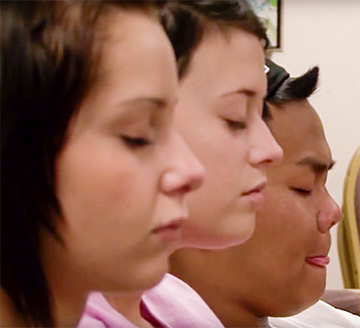
During TM practice, for example, it may seem as though you’re doing nothing, he says, “but actually you are very deeply resting and restoring your brain. It’s an antidote to the mind-scattering, mind-numbing, and mind-racing effects of being plugged in all of the time.”
Modeling this for kids is also key, says Johnson: “We can lead the charge on this and say, ‘I really need to put that phone away.’”
And if you’re feeling too tired or scattered to be present as a parent, say, “Hey, I would love to have this conversation, but let me go meditate, because when I come back, I will think more clearly, and I will be able to really pay attention to you well,” Johnson says.
“If you model this behavior for your kids, it is so much easier when you make suggestions, because they have watched you follow them yourself,” he adds.
Practicing radical downtime: “I would love to have this conversation, but let me go meditate, because when I come back, I will think more clearly, and I will be able to really pay attention to you well.”
5. Help Your Kids See the World Accurately
“The next point is that we want kids to have an accurate model of reality,” says Stixrud. “Many kids have the idea that it is either Yale or McDonald’s.”
Too many teens are “terrified they aren’t going to get into a good enough college,” he says. But it just isn’t true “that the only way to become successful is by being highly stressed and highly anxious and driven to get into the most elite college”—most successful people didn’t go to Harvard or Yale.
Help your kids prioritize developing themselves as people and as students, so they have something to contribute to the world, Stixrud and Johnson encourage.
“We don’t want children to have a workaholic brain that is never satisfied, that is always stressed, that is always unhappy,” Stixrud says, but rather “to sculpt a brain that is going to be healthy, that is going to serve them the rest of their life.”
Help your kids prioritize developing themselves as people and as students, so they have something to contribute to the world.
6. How to Get Your Kids to Sleep More? Try Negotiation, and TM
Sleep is a huge issue for children—they’re just not getting enough. “The biggest challenge that I see with kids is how under-rested they are,” says Johnson. But it’s hard to know “whether kids are not well rested because they are so stressed about what they have to do, or whether they are stressed about what they have to do because they are not well rested,” he adds.
To help your kids get more sleep, Johnson and Stixrud advise practicing a key feature of “being a consultant”: Negotiate.
“You can try to force your kid into bed, but you can’t make him sleep,” says Stixrud. Instead, “we want to negotiate with kids. What can I live with? What can you live with in terms of bedtime? And how much sleep do you think you need to function well?”
Developing such “collaborative thinking and problem-solving with our kids,” is very effective, he says, because “if we try to rigidly set limits on their technology, they just fight us all the time to use more, and it doesn’t work very well.”
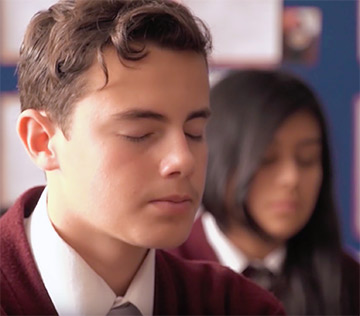
Practicing TM may help break what can be a vicious cycle of sleep deprivation, adds Johnson. He explains to kids under a lot of stress that the amygdala—the brain’s threat detector—“is about 60 percent more reactive if you are tired,” and seeing threat everywhere isn’t conducive to sleep or preparing for tests.
Because practicing TM helps calm kids’ brains, it “helps them sleep more easily and more deeply, which helps them be a little bit more calm and a little bit less anxious,” notes Johnson. “For kids who are really struggling with sleep regulation, TM might be the perfect medicine” to replace that vicious cycle with a virtuous one.
7. “When Push Comes to Shove, Do Everything You Can to Just Enjoy Your Kids”
This may seem “Pollyannish,” Johnson says, but it’s really important to simply enjoy your children—especially “when they are kind of a mess.” If they’ve had a tough time with a test, for example, think about enjoying your kids and say, “‘I love you,’ because kids so often feel that it is their success rather than them that matters.”
Just enjoying your child is also part of being a “nonanxious presence” in his life. “Let’s heal our own fear and anxiety about the kid, and then we can help him more,” Stixrud says.
Research suggests that “what infants need is warmth and responsiveness,” notes Stixrud. “You can’t discipline an infant—what they respond to is warmth and responsiveness. I am not sure there is ever a time in our life when it is not valuable to us to have somebody who is warm and responsive. Who better than parents?”
“I am not sure there is ever a time in our life when it is not valuable to us to have somebody who is warm and responsive. Who better than parents?” —William Stixrud, Ph.D.
Gifts to Help Your Kids Launch Well
What do Stixrud and Johnson hope readers get out of The Self-Driven Child?
“I want parents to feel that it is safe not to worry about their kid all of the time, that they can trust in the kid’s development,” says Stixrud. ““If we can worry less about our kids and trust that they have a brain in their head and want their life to work, then by supporting their need for a strong sense of control and autonomy, and managing our own anxiety, our kids will launch and they will launch well.””
Johnson adds that in the book, they talk about how “it’s easier to put on slippers than it is to carpet the world.” In other words, “there are things that we can practically do as people, as families, ideally as schools and communities, to make ourselves feel more peaceful and more happy… TM is one of those things that, even in the middle of a world that may not feel peaceful, if it helps our brain feel peaceful, that is such a gift, and it gives us an advantage to navigate this world that is filled with challenges.”
“TM is one of those things that… if it helps our brain feel peaceful, that is such a gift, and it gives us such an advantage to navigate this world that is filled with challenges.” —Ned Johnson
Watch for More Parenting Tips Next Month
“How the TM Technique Helps Teens Sculpt a Happier, More Resilient Brain” will feature part 2 of the insightful and informative interview with Stixrud and Johnson on parenting. Topics include how to interest your kids in practicing TM®; how to encourage them to meditate regularly; and why it makes sense to introduce the TM program into schools. They also share how their TM practice has benefited their lives and careers. Join us for this continuing conversation.

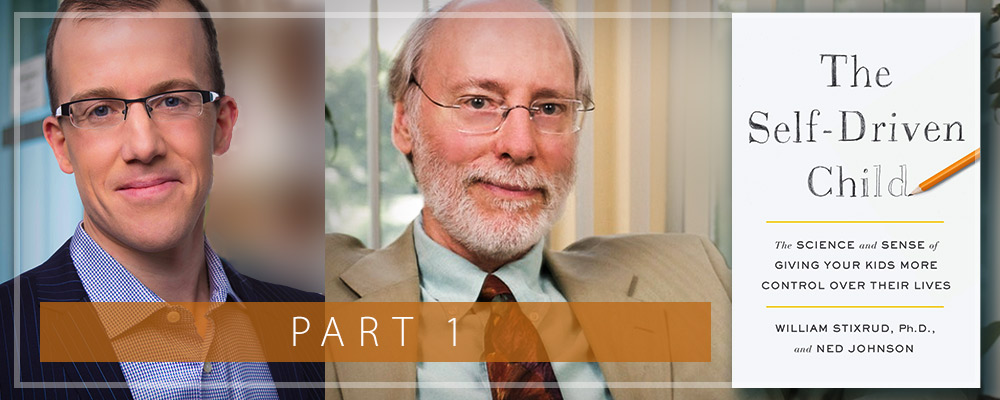
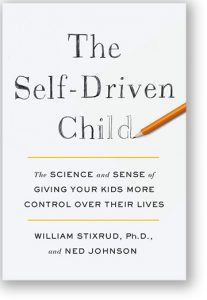

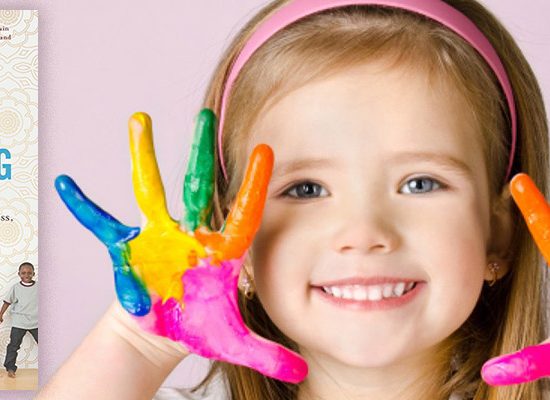

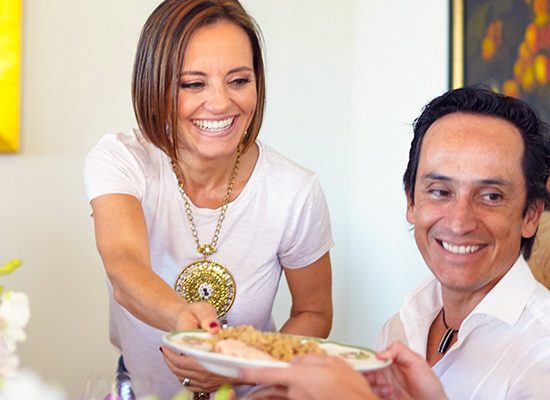
I’ve followed Bill Stixrud’s advice over my thirty years as a parent, and it has saved my psychology and created the conditions for overcoming grave challenges within our family, so that compassion, love, and understanding could win the day.
Thank you friends. This is a wonderful article, good explanation full of love, intelligent, and very useful. Jai Guru Dev. Madrid, Spain TM-Sidhis from 1981-1984
The best brain = Los mejores cerebros (Spanish) http://www.losmejorescerebros.wordpress.com
This is solid advice, even for an adult child–to let them own successes and failures, to be a nonanxious presence for them, praise their contributions to the world. Thank you.
I agree! And good advice for all kinds of relationship and friendships too. Thanks for your insight, John
Nice. I feel calmer just reading this. Are there any schools out there where this is being applied? As a long-time meditator (and teacher of IB Economics!) I would love to work in a school that adopted the full “self-driven child” program. I would love to help design and implement such a program.